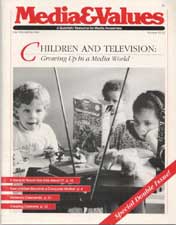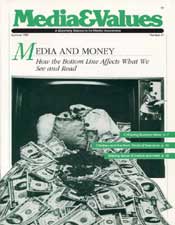Tuning in to TV Sex: How to Use Media to Dialogue with your Children
|
Article Images:
This article originally appeared in Issue# 46
|
There's no question that television is one of the primary sexual educators of our children. But rather than considering television an adversary in our efforts to educate, we can enlist it as an ally. Shows that present responsibile adults making wise and thoughtful decisions in the expression of their sexual selves may be few and far between, but less ideal portrayals can also offer opportunities if we approach them creatively.
Remember, however, to suit conversation to the child's developmental level. The following guide may help:
Age 3-6: Focus on sex roles and family configurations so little ones learn about different grown-up possibilities.
Age 7-10: Zero in on concerns about body image, clothing, hairstyles and ethnic or racial differences.
Age 11-13: As emotions and hormones escalate, talk about how feelings are expressed and directed. Programs featuring deceptions and hidden feelings make good lessons.
Age 14-17: Sexual behaviors and their consequences, from sexually transmitted diseases to confusing emotional responses, are major adolescent concerns.
Click here for a 2-page PDF tip sheet of more ways to use media to dialogue with children and youth about media portrayals of sexuality and sexual behavior.









